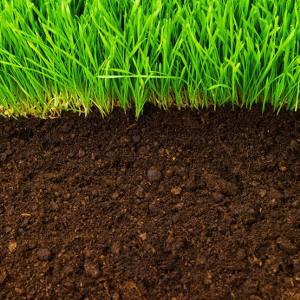Healthy soil for a healthy garden
Index
As Australia only has a small portion of naturally fertile soil, it’s important to ensure you have the right soil structure, composition and minerals to maintain a healthy garden.

Apart from indigenous plants – plants native to particular localities, which have evolved naturally to tolerate the harshest soil conditions and soil structures – nearly all plants benefit from human intervention in the form of healthy soil preparation. In a domestic sense, this means that the plants in your garden landscape are more likely to survive and prosper if you can enrich the soil beyond its natural capacity.
Horticultural consultant Lionel Wilson suggests comprehensive preparation of the soil in any new garden bed before planting. This involves vigorously digging organic matter into the soil – e.g. compost, mulch, pea straw or leaves – down to a depth of about 30 centimetres. Turn the soil with a fork or spade until the organic matter is thoroughly mixed into the garden bed.
"The best way to improve the soil is to add organic matter," says Lionel. "As the organic matter rots and breaks down it adds nutrients naturally to the soil and also improves the soil’s water-holding capacity." When microbes and bacteria go to work on the organic matter, breaking it down into compost and humus, they absorb a certain amount of nitrogen from the soil. Lionel recommends adding a high-nitrogen fertiliser like blood and bone with any organic matter, to compensate for this lost nitrogen. "This is especially important if you’re hoping to grow exotic plants," he says, "since they require nitrogen to stay healthy."
When preparing soil in a garden bed around existing plants, Lionel suggests a more delicate approach. "A couple of times a year, dig the organic matter into the soil at a decent distance so you don’t disturb the root zone of the plant, and lay mulch directly around the plant," he says. "Over time it will decompose and be absorbed into the soil." This technique can be extended to tired-looking trees. Rather than risking breaking the fine roots of the tree, it’s far better to lay mulch around the base, water it in and allow time and nature to get the nutrients into the soil.
With careful soil preparation your plants will live longer, require less water and less fertiliser. Contact a landscape designer in your area to find out how you can maintain healthy soil in your garden.
